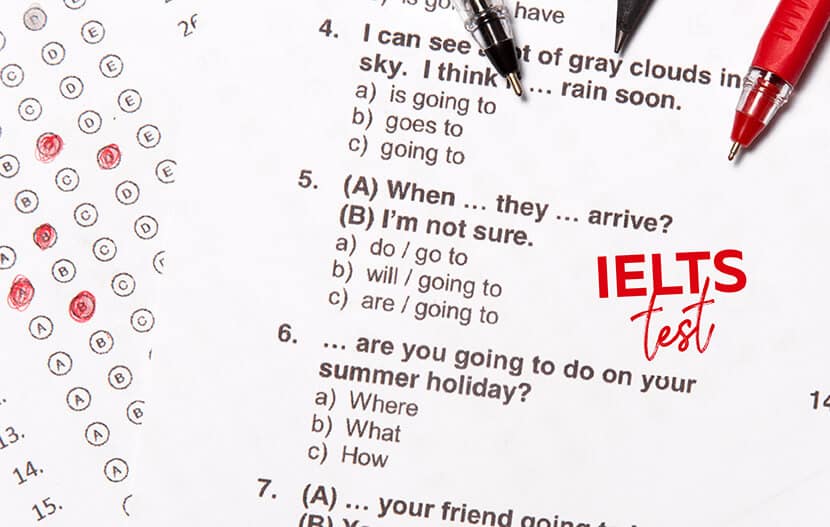Learning English fluently can help you make a success of yourself all over the world, including at university. Improve your IELTS score with these seven life hacks and skills.
Applying to university is as stressful of a task as it can get so we might as well optimise our study technique to save time and energy. In this article, we will talk about the IELTS certificate and how to play by the assessment rules.
International English Language Testing System (IELTS) is assesses the language proficiency of those candidates willing to study or work in an English-speaking environment.
The testing takes places in numerous locations around your home country every Saturday for up to €200. It can take up to two weeks for the results to be released so budget in that time when creating a timeline for your university preparation timeline.
IELTS General Vs IELTS Academic Vs IELTS Indicator
There are three types of IELTS examinations that are used for different purposes. The contents of each test differ slightly to better suit the use for each certification.
IELTS General is used as part of the application process for visas especially by candidates applying for a student visa or a work visa.
IELTS Academic is accepted by universities as an indicator for one’s level of academic English. This test is different from IELTS General in that its reading and writing sections focus more on topics that cover social and natural sciences.
IELTS Indicator was introduced last year as a way to allow candidates to safely take the assessment at home. In case the testing centres in your country have been affected by the Covid-19, universities will accept this as proof of language proficiency.

IELTS Band Score: The Logic Behind Grading
The IELTS test provides an assessment of the four main skill groups, namely, listening, reading, writing, and speaking. The overall duration of the exam is two hours 45 minutes.
The test has an unusual grading system as it provides scores in a range between 0 and 9.0, where 9.0 shows native-level English proficiency. The full description can be found official website with speaking and writing task one & task two criteria listed separately.
The overall band score for the examination is an average of the scores for each of the four sections. Let’s say you get L: 8.0, S: 6.5, W: 5.0, S: 8.5.
The total sum is 28.0, thus, the overall score is 7.0. If the sum had decimals (.25 or .75), the score would get rounded up.
Let’s have a close look at the techniques and hacks to use for each of the IELTS Academic sections.
Listening: 40 Questions In 40 Minutes
You will listen to four recordings of dialogues and monologues on academic and general topics, i.e. a speech about local facilities, a conversation with a tutor about an assignment, or a university lecture.
The questions fall into one of the following categories:
- multiple choice
- matching
- plan/map/diagram labelling
- flow-chart/summary completion
- sentence completion
Hack One
When filling out the answer sheet, write in print and use capital letters only. This will allow you not to lose point in case you forgot to capitalize a name, etc.
 Hack Two
Hack Two
For the fill-in-the-gaps task, you are most likely to insert street names, town names, last names, phone numbers etc. These can be complicated in spelling so practice by listening to YouTube videos beforehand.
Reading: 40 Questions In 60 Minutes
The section has three long texts taken from books, journals, magazines and newspapers.
The task types used for this section include the following:
- multiple choice
- identifying information/the writer’s views
- matching information/headings/features/sentence endings
- sentence/diagram label completion
- short-answer questions
Practice reading for gist, reading for main ideas, reading for detail, skimming, and recognizing writers’ opinions. Here are some of them:

Hack Three
Skimming allows you to quickly look through the text without reading each word. You are just getting the gist of the text. Here is how you do it:
- Read the title and any headings. These will give clues as to what the whole text is about.
- Read the first sentences of each paragraph. These are called topic sentences and they usually contain the main ideas for each section.
- Quickly go through the rest of the paragraph to look for some key words.
Scanning is used when you know what you’re looking for. Use scanning when you need to find a specific answer. This technique will give you the ballpark of where to dive into.
- Know what you’re looking for. It could be a name, number or date.
- Beware of synonyms. Scan the text and underline what you think is the right answer. You will come back to it later.
Now that you’ve identified the key words, read that part of the text word for word to understand exactly what it says.
Writing: Two Tasks In 60 Minutes
In this section, you will need to write a graph description and an essay. The graph description accounts for a third of the Writing band score thus you should spend about 20 minutes on the first task.
Task One: Graph/Table Description
- Introduction. The first paragraph should contain answers to all the wh- questions. What does the graph show? What are the units? When did the study take place?
- Overview. In this paragraph, you need to mention the general trend as well as two most significant features.
- Description. Now you can go into more detail and provide numbers and comparisons.
Task Two: Essay
All essays pretty much have the introduction-main body-conclusion structure so let’s instead focus on how to make a strong argument.

Hack Four
Use the SEXI body structure for each paragraph in the main body:
Statement: The first sentence is your topic sentence in which you state your position.
Example: Then you give an example that support your opinion.
eXplanation: Now go into more detail to provide some context.
Importance: Wrap up by stating the importance of your idea.
Speaking: Three Tasks In 14 Minutes
The three parts of the speaking section gradually increase in complexity.
In the first task, you are asked some general questions about your work, studies, and interests.
Give two-sentence responses by giving a straight answer first and then explaining why in a follow-up sentence. This way you will keep the responses sweet and short yet informative.
Next, need to prepare a two-minute-long monologue on a general topic (favourite vacation/memory etc.)
To get the highest score, make sure to include all the necessary information from the task sheet. For that, use the IPDOF technique. This acronym allows you to talk about any topic at length perfect for this task. As a rule of thumb, provide one to two sentences for each part.
 Hack Five
Hack Five
- Say what you’re going to talk about.
- Past. Start by stating how thing were in the past regarding this topic.
- Details. Provide the details and wh- answers.
- Opinion. What do you think about this matter?
- Future. What are you plans regarding this topic?
In the final task, you will be asked further questions on the topic. Now you will need to elaborate so you can easily apply the AREA method.
 Hack Six
Hack Six
Answer the question, give reasons, explain your choice, and reiterate the initial answer so that the examiner knows you’re done.
With these little aid memoirs and tactics, you will boost your score dramatically. Remember, the test isn’t trying to trip you over so familiarize yourself with the format and you’re good to go!
Photos: Shutterstock / Edited by: Martina Advaney
Taking this course online? Make sure you know what to look for when studying via the internet:
Support us!
All your donations will be used to pay the magazine’s journalists and to support the ongoing costs of maintaining the site.
Share this post
Interested in co-operating with us?
We are open to co-operation from writers and businesses alike. You can reach us on our email at [email protected]/[email protected] and we will get back to you as quick as we can.











